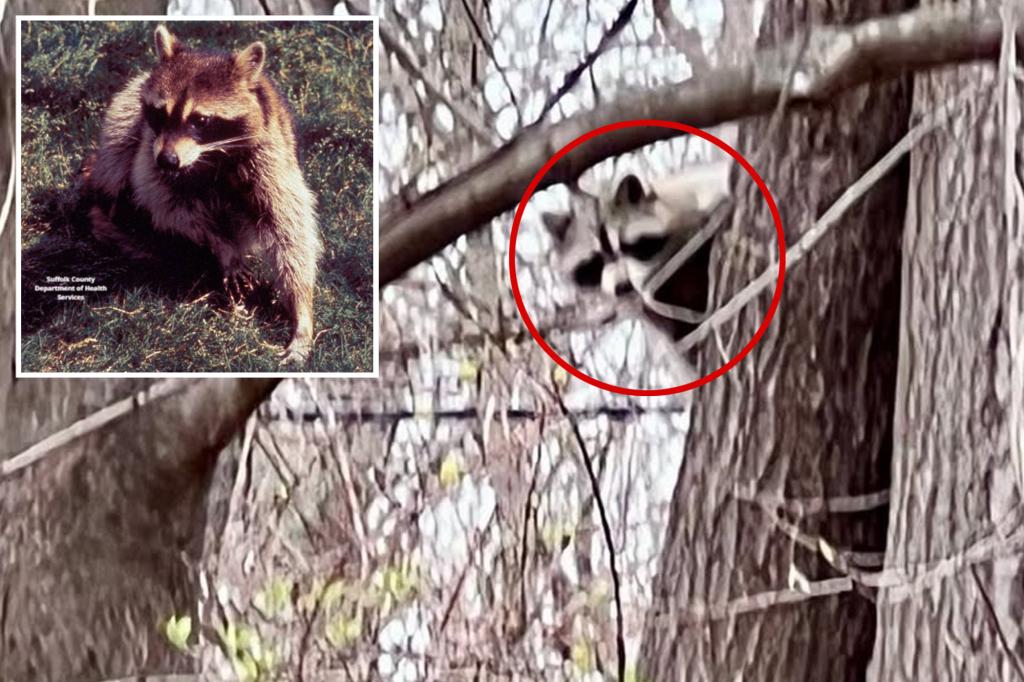Rising Concerns: Sixth Rabid Raccoon Discovered in Long Island Community
Health officials in Long Island have confirmed the discovery of a sixth rabid raccoon in the same community this month, raising alarms among residents and prompting urgent safety advisories. The latest case was reported on June 10, 2024, in the town of Huntington, where local authorities are scrambling to contain the outbreak. With rabies posing a severe risk to humans and pets, experts emphasize vaccination and vigilance as critical defenses.
Rabies Outbreak Triggers Community-Wide Alert
The Suffolk County Department of Health Services has documented six rabid raccoons since early May, marking the highest concentration of cases in the area in over a decade. Dr. Emily Carter, a public health veterinarian, warns that the trend signals a potential escalation. “Rabies is endemic in wildlife, but this cluster is unusual,” she says. “Residents must assume any raccoon—especially those acting aggressively or appearing disoriented—could be infected.”
Key statistics underscore the gravity of the situation:
- Rabies fatalities in the U.S. average 1–3 annually, per the CDC.
- Post-exposure treatments in Suffolk County have risen by 40% this year.
- Raccoons account for 30% of rabies cases in New York State.
How Authorities Are Responding to the Crisis
Local agencies have launched a multi-pronged effort to curb the outbreak. Animal control teams are conducting nighttime patrols to trap and test suspicious raccoons, while bait stations with oral rabies vaccines are being deployed in wooded areas. “We’re prioritizing hotspots near schools and parks,” says Huntington’s Animal Control Director, Mark Reynolds. “But public cooperation is essential—report sightings immediately.”
Meanwhile, the health department has partnered with veterinary clinics to offer low-cost pet vaccination clinics. “Unvaccinated pets are at high risk,” notes Dr. Carter. “One bite from an infected animal can be fatal.”
Community Reactions and Precautionary Measures
Residents describe a climate of anxiety. “My kids used to play outside until dusk,” says Huntington mother Lisa Nguyen. “Now I’m checking the yard every hour.” Others, like retiree George Kovac, blame urban sprawl: “As forests shrink, raccoons get bolder. It’s a recipe for conflict.”
Officials recommend these precautions:
- Vaccinate pets and livestock.
- Avoid feeding or approaching wildlife.
- Secure trash cans with locking lids.
The Bigger Picture: Rabies Prevention in New York
This outbreak mirrors a statewide uptick in rabies cases, with 145 animals testing positive in 2023—a 12% increase from 2022. Wildlife biologist Dr. Rachel Lin attributes the rise to climate shifts and habitat fragmentation. “Warmer winters extend raccoon activity periods, increasing contact with humans,” she explains.
New York’s rabies management strategy includes:
- Annual aerial vaccine drops in rural areas.
- Mandatory pet vaccination laws.
- Public education campaigns.
What’s Next for Long Island Residents?
While officials work to contain the outbreak, they urge calm. “Rabies is preventable with prompt action,” assures Dr. Carter. Suspected exposures should be reported to the Suffolk County Health Department at (631) 854-0333. For pet vaccinations, visit their website for clinic schedules.
The coming weeks will be pivotal. If cases plateau, targeted interventions may suffice. But if raccoon rabies spreads further, broader measures—like expanded trapping or community-wide alerts—could follow. For now, vigilance remains the watchword.
See more WebMD Network



